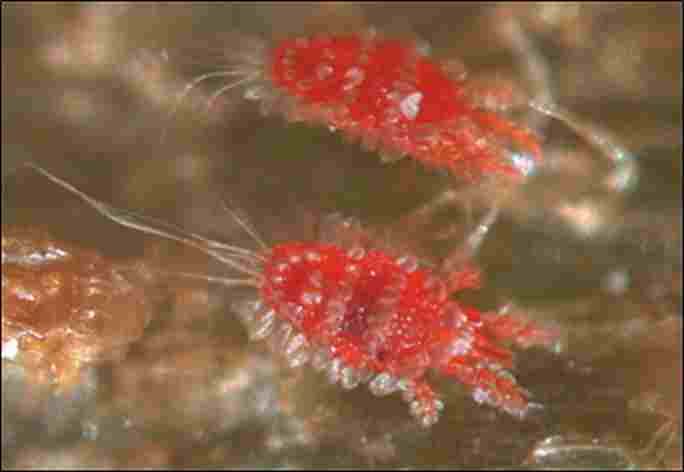This short course will focus on the mites themselves and not on agricultural crops.
The course will be both theoretical and practical, prioritizing hands-on work and expertise needed in the field and the collection and preparation of mites. There will be a course handbook, which will include all the information on scouting, collecting, mounting, info on the pest families, etc, as well as an identification key to the main mite families found on plants. The handbook is being compiled by Professor Eddie Ueckermann. Even though the emphasis is on mites of agricultural importance, the skills obtained in this course will be valuable for work on other mite species.
The provisional course plan is as follows:
Day 1 –Introduction
- Introductory lecture
- Symptoms to look for – generic and crop-specific.
- How to scout for mites in different plants/crops/plant parts
- Different collection methods – beating, washing, hand-collecting, etc.
- How to recognise (broadly) the most obvious mite families while scouting & collecting
- Collecting mites from plants around campus
Day 2 – Fieldwork and practical methods
- Field trip to Welgevallen – grapevine and citrus
- Scouting for mites and collecting them
- Extracting/collecting mites from field collections (depending on the type of collection)
- Initial identification under a microscope (recognising the families so that they can be mounted correctly)
- Slide-mounting of mites (those collected in the field, and we will also have others for practice)
Day 3 –Taxonomy
- Basic taxonomy of mites & taxonomic language specific to acarology
- Identification of mite orders
- Identification of main families found on plants, including pest & predator families.
- How to recognise families in the field and under a stereomicroscope, when this is possible.
- What features are only visible under a compound microscope (and therefore field identification is impossible)
- Easily mixed-up families, especially with field identifications (e.g. Tetranychidae & Stigmaeidae)
- Start identification of slide-mounted specimens
Day 4 –Practice
- Implement lessons learned during the week.
- More slide-mounting
- More identifications
- More detailed identification (genus or species) for those that are interested.
The level of identification will depend on the individual person. The general aim of the course is for participants to be able to identify the main mite families found mainly on plants.
When it comes to actual practical identification, the level of detail will depend on the person. For those with little taxonomic/acarology background, Dr. Davina Saccaggi will lump some of these together (e.g., it's not absolutely necessary to be able to tell the Mesostigmata families apart, since they're all predatory). And vice versa, for those who are able to, Dr. Saccaggi will also introduce participants to the correct keys for genus or species identifications and help them through.
The list of mites that will be focussed on:
- Main pest families
- Tetranychidae
- Tenuipalpidae
- Eriophyoidea
- Tarsonemidae
- Predator families
- Phytoseiidae
- Asciidae
- Laelapidae
- Stigmaeidae
- Anystidae
- Bdellidae
- Cheyletidae
- Cunaxidae
- Erythraeidae
- Trombidoidea
- Others (some uncommon pests, some fungi-feeders, some incidentals)
- Acaridae
- Tydeidae
- Penthaleidae
- Oribatida
- Tuckerellidae

The registration link will be available shortly.
For more information please contact
Caro Kapp
ckapp@sun.ac.za

